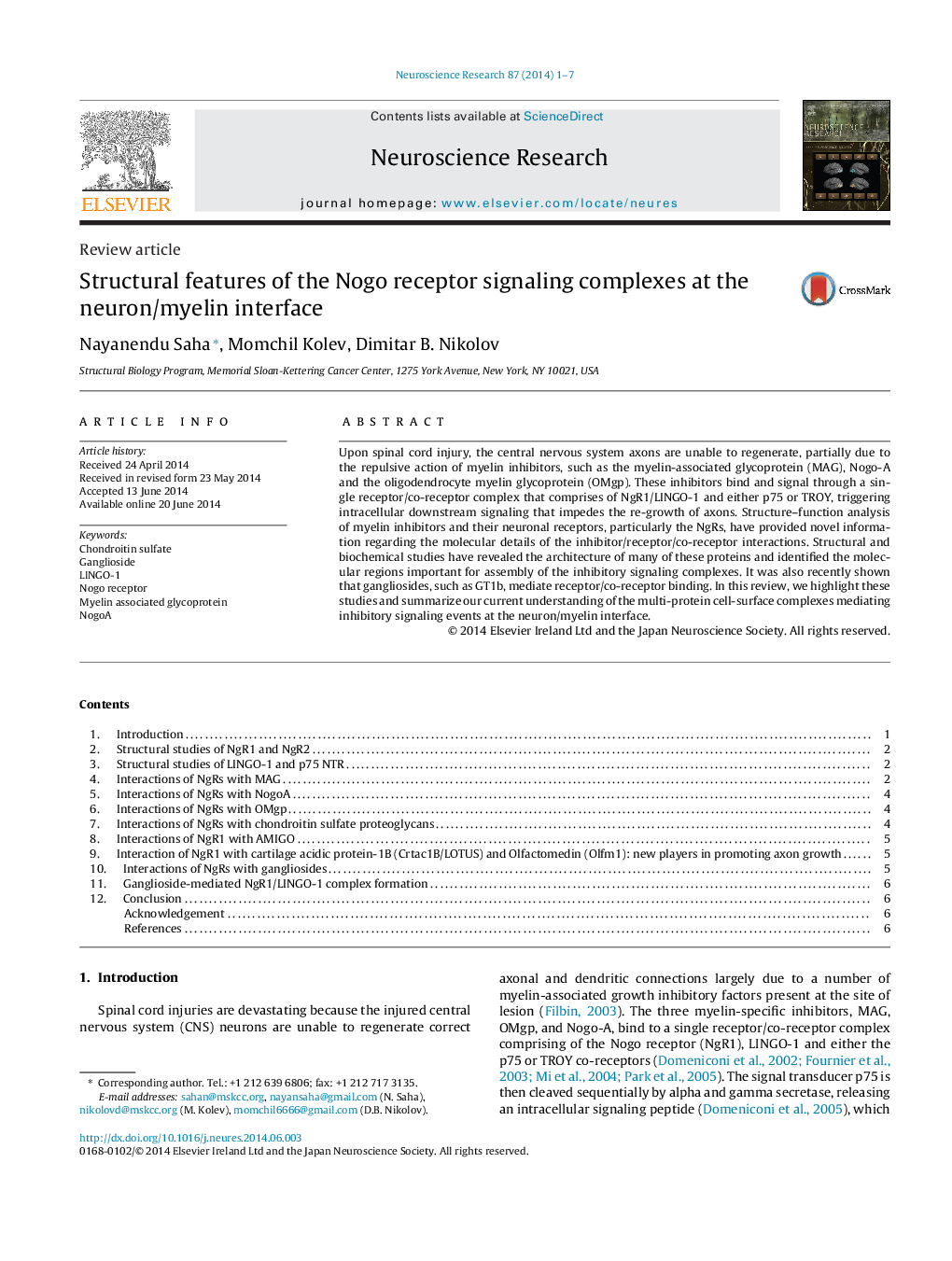| Article ID | Journal | Published Year | Pages | File Type |
|---|---|---|---|---|
| 6286178 | Neuroscience Research | 2014 | 7 Pages |
â¢Myelin inhibitors and neuronal receptors play important role in spinal cord injury.â¢Structure-function studies of myelin inhibitors have been discussed.â¢Structure-function studies of neuronal receptors have been discussed.â¢The review highlights the molecular regions mediating inhibitory signaling events.
Upon spinal cord injury, the central nervous system axons are unable to regenerate, partially due to the repulsive action of myelin inhibitors, such as the myelin-associated glycoprotein (MAG), Nogo-A and the oligodendrocyte myelin glycoprotein (OMgp). These inhibitors bind and signal through a single receptor/co-receptor complex that comprises of NgR1/LINGO-1 and either p75 or TROY, triggering intracellular downstream signaling that impedes the re-growth of axons. Structure-function analysis of myelin inhibitors and their neuronal receptors, particularly the NgRs, have provided novel information regarding the molecular details of the inhibitor/receptor/co-receptor interactions. Structural and biochemical studies have revealed the architecture of many of these proteins and identified the molecular regions important for assembly of the inhibitory signaling complexes. It was also recently shown that gangliosides, such as GT1b, mediate receptor/co-receptor binding. In this review, we highlight these studies and summarize our current understanding of the multi-protein cell-surface complexes mediating inhibitory signaling events at the neuron/myelin interface.
